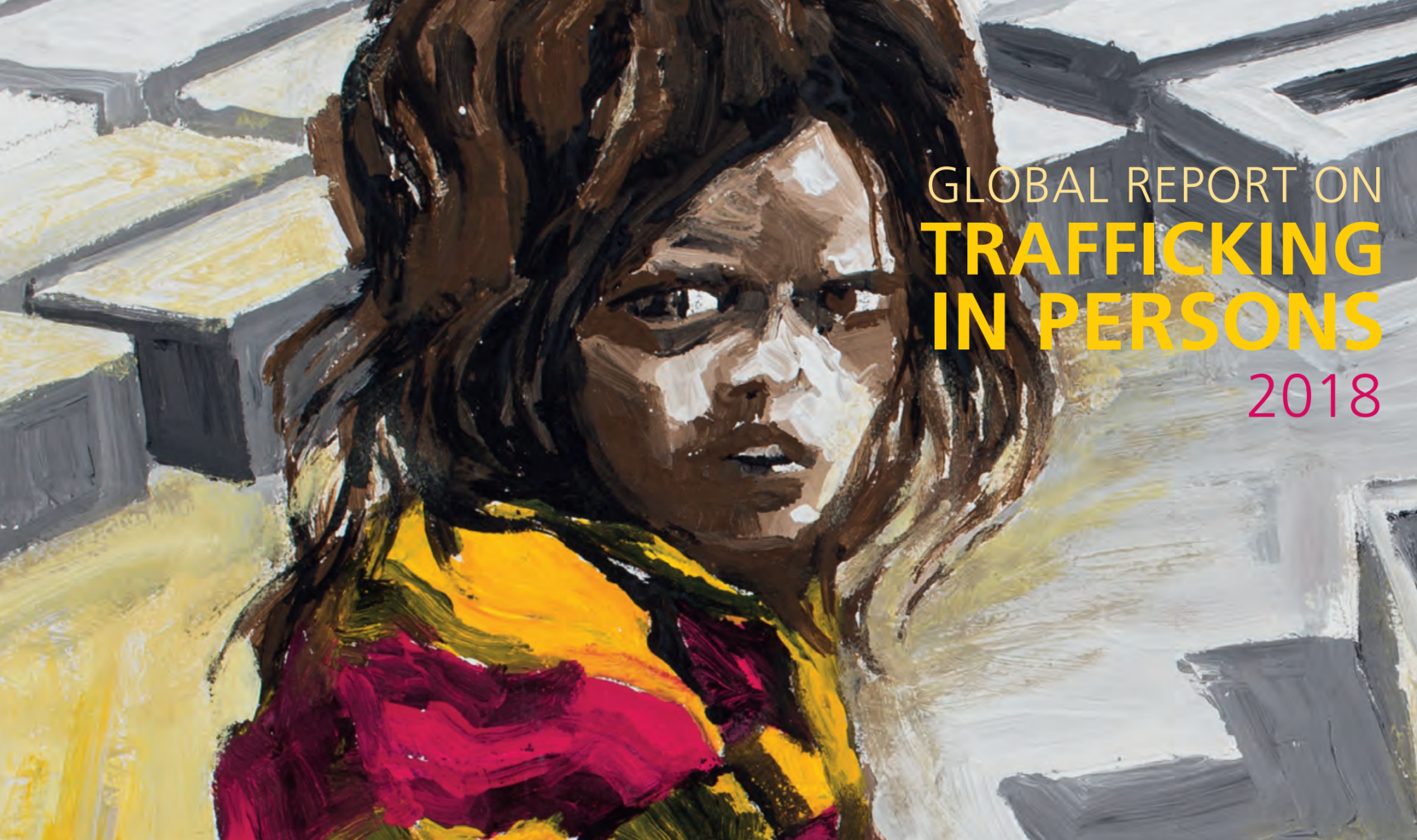
Global Report on Trafficking in Persons 2018
The Global Report on Trafficking in Persons 2018 puts the spotlight on human trafficking in armed conflict. Human trafficking is always a crime, committed with the intention to exploit; in conflict situations, characterized by violence, brutality and coercion, traffickers can operate with even greater impunity. Trafficking in armed conflict has taken on horrific dimensions – child soldiers, forced labour, sexual slavery.
Globally countries are detecting and reporting more victims, and are convicting more traffickers. This can be the result of increased capacity to identify victims and/or an increased number of trafficked victims Countries have reported increased numbers of detected trafficking victims over the last few years. While the number of reporting countries did not significantly increase, the total number of victims per country did. The trend for the average number of detected and reported victims per country had previously fluctuated during the earlier years for which UNODC has collected this data, but it has been increasing steadily over the last few years.
From a regional perspective, the increases in the numbers of detected victims have been more pronounced in the Americas and in Asia. These increases can be the result of enhanced national capacities to detect, record and report data on trafficking victims, or to a growth in the incidence of trafficking, that is, that more victims have been trafficked. Enhanced national capacity to detect victims could be achieved through strengthened institutional efforts to combat trafficking including legislative reforms, coordination among national actors, special law enforcement capacities and improved victim protection efforts, to mention some. In countries with a long-standing anti-trafficking framework, with no major recent legislative or programmatic initiatives, more detections may be more likely to reflect an increased number of trafficked victims.
Over the last ten years, the capacity of national authorities to track and assess patterns and flows of trafficking in persons has improved in many parts of the world. This is also due to a specific focus of the international community in developing standards for data collection. Capacity building in data collection has become one of the aspects of counter trafficking activities that the international community considers for evidence-based responses. More countries are now also able to collect and record data and report on trafficking in persons, the capacity to collect official statistics on trafficking in persons at the national level has improved. In 2009, only 26 countries had an institution which systematically collected and disseminated data on trafficking cases, while by 2018, the number had risen to 65.
Read more here.
